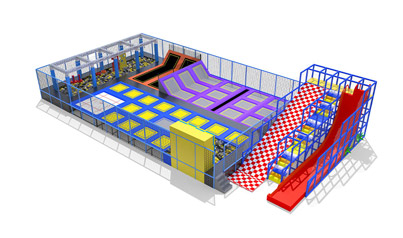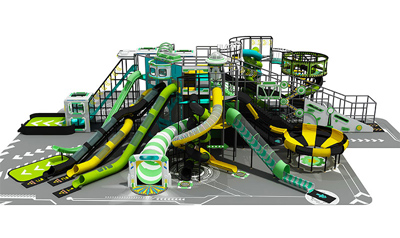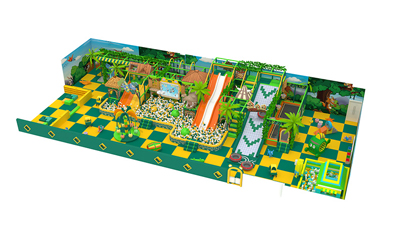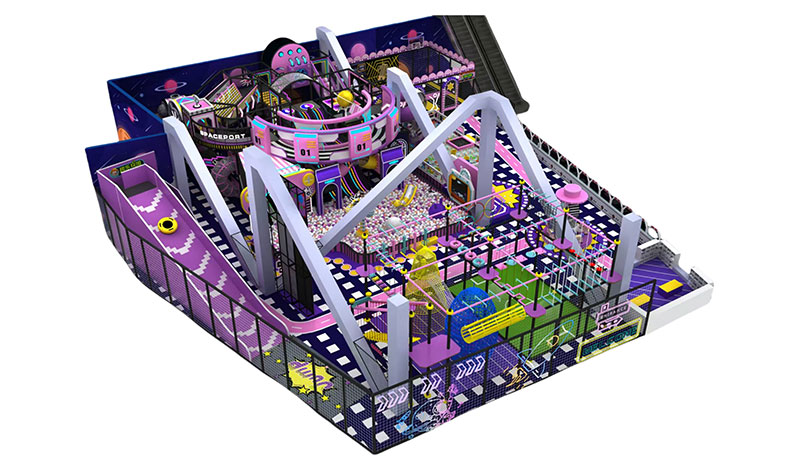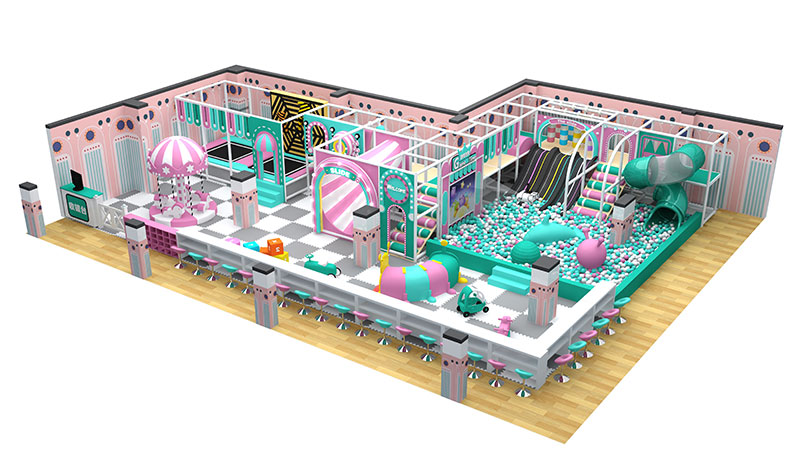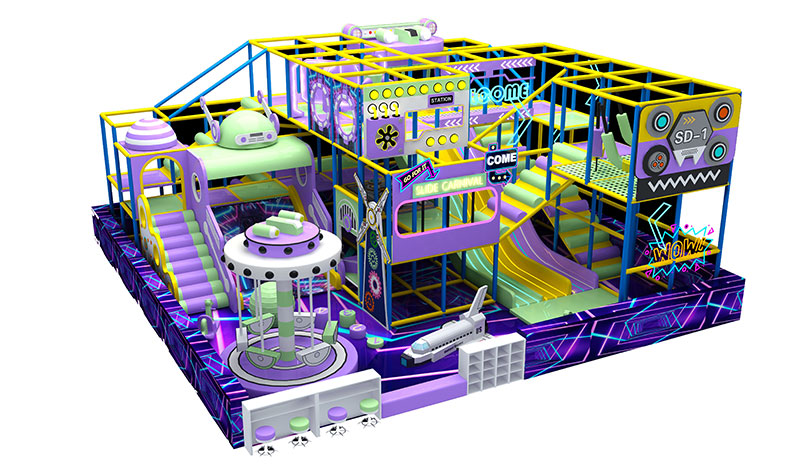Mall operators, early learning center managers, and family venue investors often face two design puzzles: “What fits my space?” and “How to suit kids of all ages?” Overcrowded layouts or one-size-fits-all designs fail to balance safety and fun. This guide uses real product features and space-planning data to solve these issues—no guesswork needed.
Design for Children’s Ages: Match Developmental Needs
1–3 Years Old (Toddlers): Safety & Sensory Focus
Toddlers need gentle, protected play:
Equipment: Low climbing walls (≤60cm) with non-slip pads, shallow ball pits (≤30cm depth, 7cm foam balls), and sensory panels (texture buttons, shape-sorters).
Safety: 5cm-thick foam padding (non-toxic PVC leather), 10mm slip-resistant rubber mats (meets TUV EN1176), no small parts (≥3cm diameter to avoid choking).
Space: 40–50% open area (min. 2m×3m) to prevent collisions.
4–8 Years Old (Young Kids): Play & Skill-Building
This group craves interaction and moderate challenge:
Equipment: Multi-level play towers (1.2–1.8m), 30° slope slides (2.5–3m), rope bridges (60cm wide), and touch-sensitive light panels.
Safety: 2mm galvanized steel frames (supports 50kg, ASTM F1487), 75cm tall handrails, enclosed moving parts.
Social Play: 2–3 group zones (e.g., 3m×4m foam block areas) to boost engagement—kids play 60% longer with group-focused gear.
9–12 Years Old (Older Kids): Challenge & Independence
Older kids need safe, physical challenges:
Equipment: Ninja obstacle courses (1.5m walls, 10cm balance beams), junior trampolines (1.8m×2.4m, 50cm safety nets), and mazes (1.5m partitions).
Safety: Trampoline foam pads (2cm thick), rust-resistant aluminum frames (100kg capacity), impact-resistant plastic (CE EN71).
Supervision: 80% unobstructed sightlines to monitor activity.
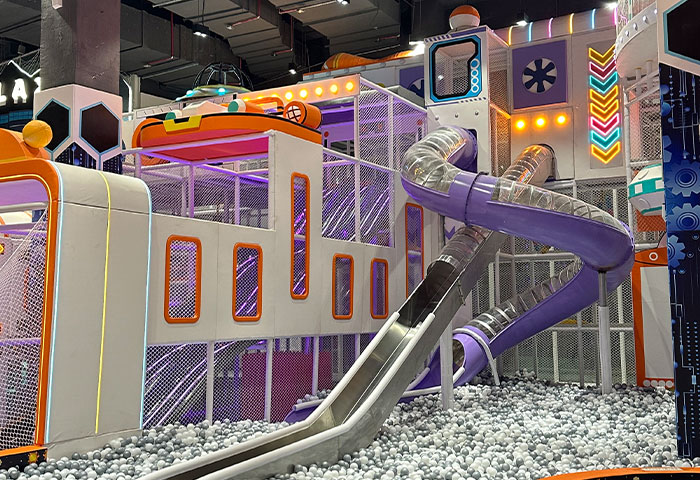
Design for Space Sizes: Maximize Efficiency
Small Spaces (50–100㎡): Multi-Functional Gear
Follow the “3:2:1” rule: 30% core structures, 20% interactive zones, 10% seating (40% open space).
Example 70㎡ Layout: 21㎡ multi-use play tower (slide+climbing wall), 14㎡ ball pit with cannons, 7㎡ seating.
Tips: Use foldable/modular equipment (≤15kg each, supports 30kg, ISO 9001) to avoid clutter. Limit density to 0.3 pieces/㎡ (reduces collision risks by 40%).
Medium Spaces (100–300㎡): Zoned Experiences
Divide into 3–4 zones (toddler, young/older kids, seating) with 60cm partitions and 1.2m pathways.
Example 200㎡ Layout: 40㎡ toddler zone, 60㎡ young kids zone, 60㎡ older kids zone, 40㎡ seating.
Tips: Add storage to equipment (e.g., play tower bases) to save space; place high-traffic zones near entrances.
Large Spaces (300㎡+): Thematic Design
Embrace themes (e.g., ocean, space) with cohesive gear:
Example 500㎡ Ocean Theme: 100㎡ toddler “coral” zone, 150㎡ young kids “submarine” tower, 150㎡ older kids “pirate” obstacle course, 100㎡ seating.
Tips: Use custom, fire-retardant foam (ASTM F1918) and fade-resistant inks; include 1.5m wheelchair paths for accessibility.
Safety & Fun: Non-Negotiable Rules
Safety: Stick to Global Certifications
Prioritize CE EN71 (non-toxic materials), TUV EN1176 (surfaces/load), ASTM F1487 (equipment design), and ISO 9001 (quality). Test gear for kid behaviors (e.g., 20kg pulls on ropes) to ensure durability.
Fun: Boost Repeat Visits
Add AR floor games (increases playtime by 35%).
Rotate 10–15% small gear (sensory toys) every 3–6 months.
Include parent perks (charging ports, Wi-Fi) to attract families.
Why 2kiddy for Your Indoor Playground?
2kiddy (Wenzhou Xingjian Play Toys Co., Ltd.) has 10+ years of experience, delivering 500+ projects across 20+ countries. Our strengths:
Customization: Gear tailored to your space (50–500㎡+) and age needs.
Safety: All products meet CE EN71, TUV EN1176, ASTM F1487, ISO 9001.
Durability: Galvanized steel, non-toxic PVC, impact-resistant plastic (10,000+ uses).
Full Support: Design, installation, and maintenance—on time, on budget.
Conclusion
Designing indoor playgrounds works when you:
1.Match equipment to ages (toddlers = soft play; older kids = challenge).
2.Fit layout to space (small = multi-functional; large = themes).
3.Prioritize certified safety.
This creates a space kids love and parents trust—turning your playground into a profitable family destination.


